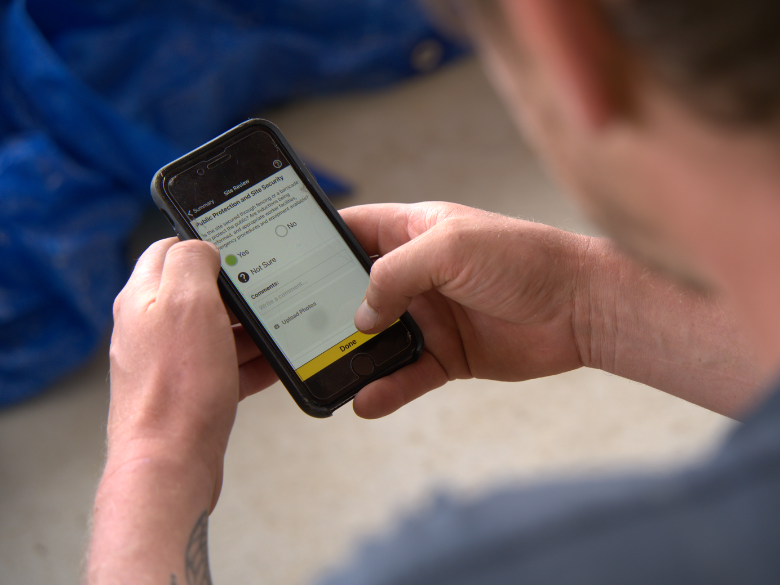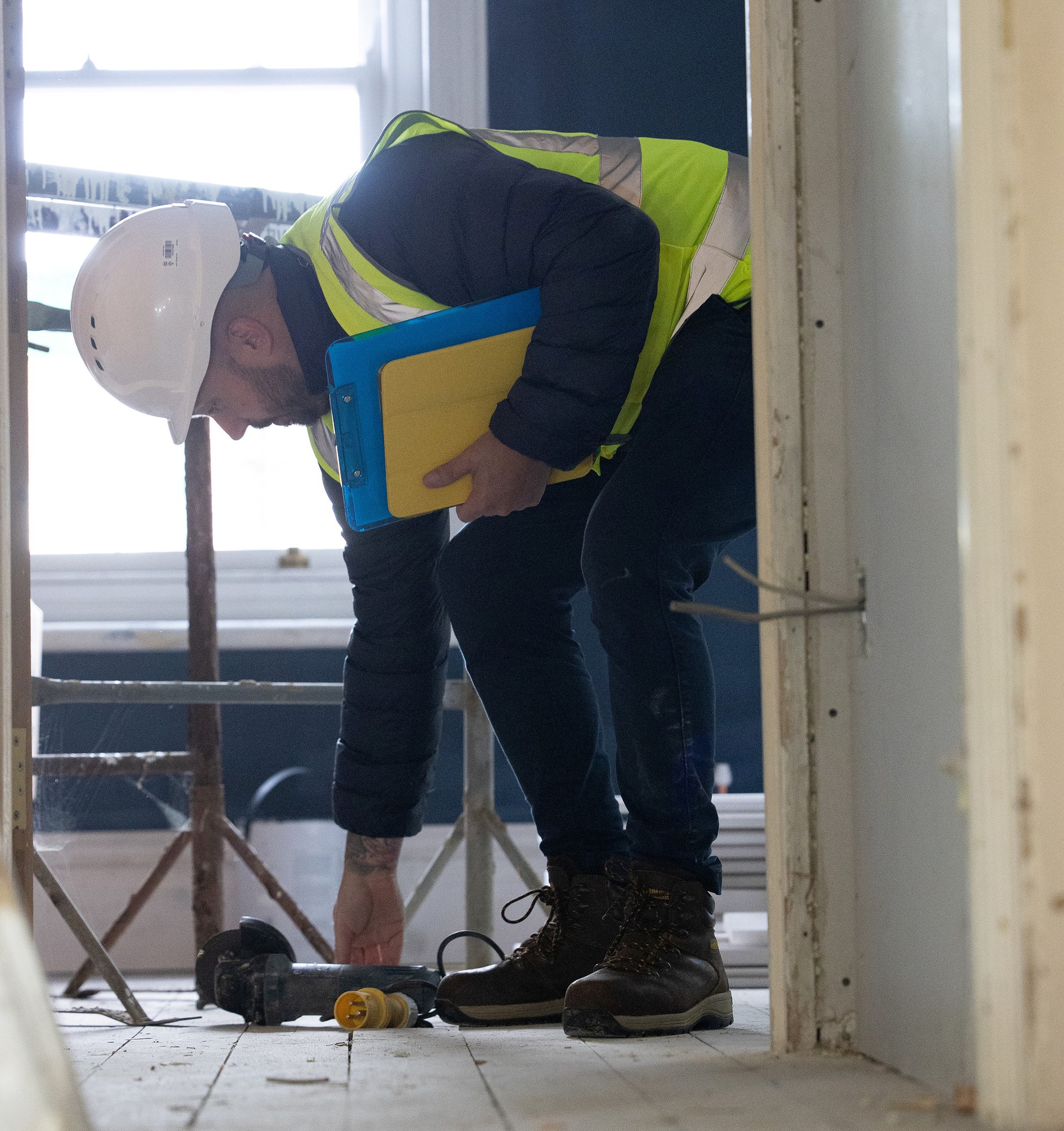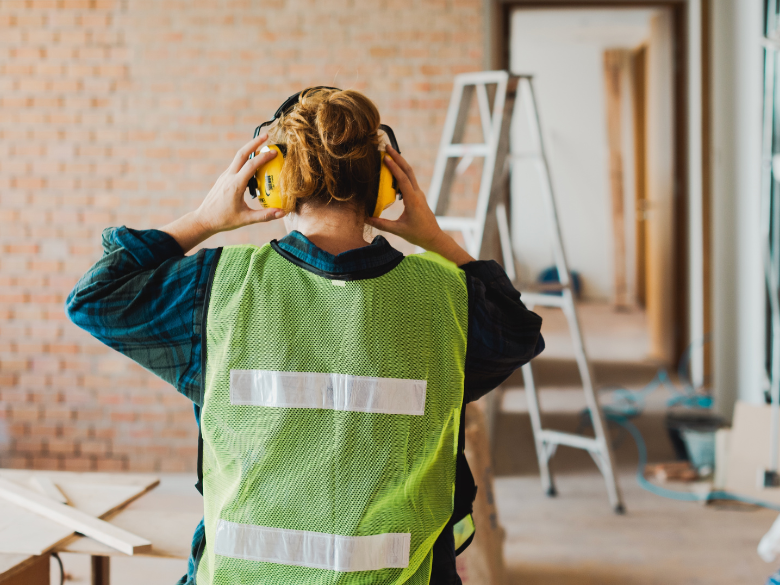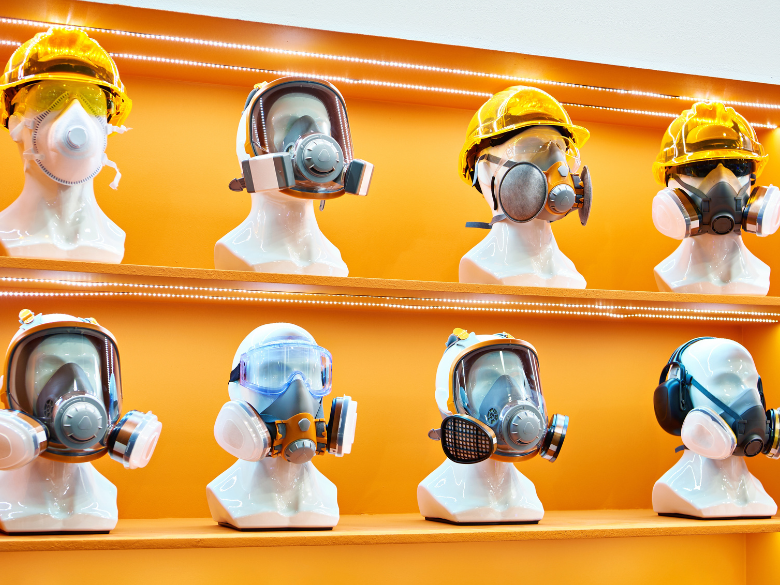
It’s that time of year again – the calendar’s full, the jobs are piling up, and everyone’s looking forward to a well-earned break. You’re pushing to get the last few projects over the line, finish the paperwork, and keep the team happy.
We get it. The end-of-year rush can be intense. But when the pressure’s on, it’s easy for safety checks to slide down the list. The focus shifts to finishing fast, not necessarily finishing right.
Before you pack up the tools and head home, take a moment to make sure your sites are still running safely and smoothly. A few minutes of care now can save you a whole lot of stress in the new year.
When things get busy, the best way to stay on top of safety is to make it simple. That’s where the Site Review feature in the HazardCo App comes in.
A quick walk around your site with a Site Review helps you spot what’s working well and what needs a tidy-up before the holidays. Think of it like your site’s end-of-year health check – quick, straightforward, and right there on your phone.
You can snap photos, add comments, and tick off areas as you go, so you’ve got a clear, time-stamped record of your site’s condition. It’s an easy way to confirm that everyone’s working safely, everything’s in order, and nothing’s been missed in the year-end rush.
And if you’re a business owner or site supervisor, it’s a great peace of mind, you’ll know your sites are in good shape while you’re taking that well-deserved break.
Not sure what to look for? No problem. The Site Review feature guides you step-by-step through what to check on-site, from tidy work areas and secured materials to the basics like PPE, access ways, and equipment condition.
It’s designed to make safety simple, even if you don’t have a dedicated health and safety person on your team. You’ll quickly see what’s running smoothly and what could use improvement, and you’ll have a clear, digital record you can refer back to anytime.
That means less guesswork, less paperwork, and fewer headaches when you come back in January.
Before you shut down for the year, take a few minutes to complete a Site Review. It’s a small step that helps you wrap up confidently, knowing your sites are tidy, safe, and ready for a fresh start in the new year.
When you come back after the break, you’ll hit the ground running, not scrambling to fix what got missed in the rush.
So before you call it a year, do one last thing to protect your team, your reputation, and your business: run a Site Review in the HazardCo App.
You’ll finish the year strong, and start the next one even better.
Picture this: you’re starting another day on site, and you’re heading out to your work area. You notice a ladder leaning against the wall, but one of the rungs looks cracked. A few metres away, someone’s left a pile of timber stacked a little too high, and the wind’s picking up. None of it looks like a disaster on its own, but these are the small things that can add up to a serious injury if no one speaks up.
That’s the reality of construction sites. They’re full of moving parts, changing conditions, and plenty of ways things can go wrong. A hazard is simply anything that could hurt you or someone else on-site. The trick is learning to spot them before they turn into incidents. Once you know what to look for, it becomes second nature, like checking your mirrors before pulling onto the road.
Some hazards are obvious, like a roof edge without guardrails or a live wire dangling where it shouldn’t be. Others are subtle. Falls are the number one cause of serious injuries on building sites, and they don’t just happen from rooftops. A wobbly ladder, a scaffold missing a plank, or even a wet surface after overnight rain can quickly lead to a fall and serious injury.
Then there’s the danger of being struck by something. A tool dropped from above, a reversing vehicle in a blind spot, or a swinging load from a crane, these moments happen in an instant and can change lives forever. Electricity brings its own set of risks. Damaged cords, overloaded circuits, or working too close to power lines are all hazards that can cause serious harm in an instant.
And it’s not always about dramatic moments. Sometimes it’s the slow-burn hazards that do the most damage: breathing in dust day after day, being exposed to paint fumes, or dealing with asbestos in an old structure. They might not knock you down on the spot, but they can cause long-term health issues that no one wants to bring home.
So how do you get good at seeing hazards before they catch you out? It starts with building a habit. Each morning, take a few minutes to walk around the worksite. Look at what’s changed since yesterday. Is there new equipment? Has the weather caused damage? Are materials stacked differently? That quick scan can save you from nasty surprises later in the day.
Hazard spotting isn’t something you do once and tick off. It’s an all-day habit. At the start of your shift, scan the site. During the day, keep checking, especially after breaks or when conditions change. At the end of the day, tidy up, secure materials, and make sure barriers are still in place. That way, the next crew isn’t walking into danger before they’ve even started.
And when you do find something? Don’t wait. Stop what you’re doing, warn others, and report it. Even better, document it so there’s a record, because the last thing anyone needs is for the same hazard to crop up tomorrow.
Here’s the thing: safety isn’t just the job of the person with the clipboard. Everyone on-site can use their awareness and judgement to spot hazards. The people who make the biggest difference are the ones who keep asking “what if?”, who don’t rush past something that looks dodgy, and who aren’t afraid to speak up. Passing that mindset on to new workers is how you build a strong safety culture.
Of course, knowing how to spot hazards is one side of the story. Keeping track of them and making sure they’re fixed is the other. That’s where HazardCo makes life easier. Instead of scribbling notes on scraps of paper or trying to remember everything until you see your supervisor, you can log hazards in the app as soon as you spot them using our Site Review feature in the HazardCo App. The system guides you through each step, so nothing falls through the cracks.
Site Supervisors see updates instantly, workers know what’s being done, and the whole process is clear and simple. No chasing paperwork, no confusion, just a guided way to manage hazards that gives everyone peace of mind.
Next time you’re on-site, take 10 minutes to really look around the area. What’s stacked where? What’s changed since yesterday? What could go wrong, and what could you do to make it safer? That small step is the start of a habit that keeps you and your crew safe.
And if you want a system that doesn’t just leave hazard spotting up to memory or luck, HazardCo’s got your back. With our guided approach, you’ll have everything you need to identify, report, and track hazards with confidence. Because at the end of the day, safety isn’t about ticking boxes, it’s about making sure everyone goes home safely at the end of the day.
Every year in September, people around the world mark Global Deaf Awareness Week (22–28 September 2025). It’s a chance to recognise the importance of communication, accessibility, and inclusion for the Deaf community. For those of us working in construction, it’s also the perfect reminder of how precious our hearing is, and how easily it can be damaged by the noise we’re exposed to every day.
Power tools, heavy machinery, vehicles, and hammering – the soundtrack of a busy site is loud. And while it might just feel like “part of the job,” that constant exposure can take a serious toll on your hearing over time.
Noise-induced hearing loss (NIHL) happens when loud sounds damage the sensitive structures in your inner ear. Depending on the type and extent of damage, NIHL can be temporary or permanent. The good news? Unlike many other forms of hearing loss, NIHL is entirely preventable.
It’s also very common. Research shows that 12,000 people in the UK have hearing problems like deafness or tinnitus due to loud noises at work. People who work in noisy industries, like construction, agriculture, carpentry, mining, oil and gas, and the military, are especially at risk.
You might be surprised at just how quickly noise becomes dangerous. Here are some benchmarks:
On a construction site, these levels are reached every day, sometimes without us even realising.
Hearing loss doesn’t usually happen all at once. Symptoms can creep up slowly, which is why many people don’t notice until it’s too late. Some of the most common signs of NIHL include:
There are two main types of NIHL:
Hearing loss doesn’t just affect you at work. It changes your whole life.
And the effects don’t stop there. Untreated NIHL has been linked to:
In short, it doesn’t just change what you can hear, it changes how you live, connect, and feel day to day.
The good news is, hearing loss from noise exposure is 100% preventable. Here’s how:
If you think you might already be experiencing signs of NIHL, don’t ignore it. Talk to your primary care physician or healthcare provider – they can refer you to an audiologist (hearing specialist) or otolaryngologist (ear, nose, and throat doctor) for further tests.
Specialists use a range of hearing assessments to diagnose NIHL and check if there are any other contributing factors. Getting tested early is important: even if hearing loss can’t be reversed, the right support and treatment can help you manage symptoms, protect the hearing you have left, and improve your quality of life.
This week, let’s not just raise awareness, let’s take action. Protect your hearing, look out for your team, and start conversations about noise on-site.
Because hearing isn’t just about safety at work. It’s about being able to connect, laugh, share stories, and enjoy life for years to come.
Respiratory Protective Equipment (RPE) is a critical layer of defence for workers exposed to airborne hazards like dust, fumes, vapours, But not all RPE offers equal protection, and even the best equipment won’t keep you safe if it doesn’t fit properly, isn’t suited to the task and things it’s filtering, or isn’t well maintained.
Here’s what you need to know about getting RPE right, from upfront fit testing to choosing the right cartridges, to regular check-ups and health monitoring.
Before a worker ever steps into a hazardous area, they need to be fit tested for the right RPE. Why? Because no two faces are the same. RPE comes in different sizes typically ranging from Small to Extra Large, and a poor fit can mean poor protection, even if the mask looks like it fits.
Fit testing must be:
Fit testing is also a great opportunity to train workers on how to wear and check their masks properly, which brings us to the next step.
Not all filters protect against all hazards. It’s essential to choose RPE that’s targeted to the type of contaminant and the task at hand.
To get this right, consider:
Important: Choosing the wrong size or type of RPE will give the illusion of safety, while leaving workers dangerously exposed. There is a world of difference between “looks safe” and “is safe”
Once the right gear is chosen and correctly fitted, the work doesn’t stop. RPE needs to be maintained, checked, and re-evaluated regularly.
Even with the best gear, health monitoring plays an essential role in a full respiratory protection programme. It’s how you check whether control measures (like RPE) are really working, and catch signs of harm early.
Under The Control of Substances Hazardous to Health Regulations 2002 , you’re required to monitor workers’ health if they’re exposed to substances that pose a serious health risk.
Health surveilance can include:
RPE isn’t just a piece of kit, it’s a commitment to keeping people safe. By following these three steps:
You’re doing more than following regulations. You’re creating a culture where safety is personal, proactive, and properly managed.
The right mask, worn the right way, backed by the right training and monitoring – that’s how you keep your team safe.
The HazardCo App has a new Plant/Machinery Pre-Start tool! It’s a quick and easy way to do pre-start checks on various plant and machinery such as scissor lifts, boom lifts, and excavators. Just whip out your app, follow the guided prompts, and you’ll know all your reports are saved for safekeeping.
This is a great new tool for those currently filling in the log book that stays with the machine, causing lots of painful admin work to gather and compile the information for your records.
Why conduct pre-start checks?
Pre-start checks are a simple way to check that your plant and machinery are up to scratch before use. Whether it’s hired or owned equipment, a quick check will help you to identify any potential issues that could impact the safety of your team or the performance of the machinery. By referring to the manufacturer’s instructions and best practices, workers can make sure the machinery they have is in a safe condition to be used, and if not, the HazardCo App gives you an easy way to communicate the issues happening on the ground to the right people. When done well, pre-start checks go a long way to preventing incidents and equipment failures.
When to use the Plant/Machinery Pre-Start tool
The Plant/Machinery Pre-Start tool should be used before the operation of any plant or machinery. You can find it in the main menu of the HazardCo App. Once a pre-start check is completed, the report is automatically saved to the Reports section in the Hub and the App for easy access in the future.
Benefits for workers: The Plant/Machinery Pre-Start tool provides an easy way to follow pre-start procedures. It helps you communicate any issues that need to go up the chain and make sure information isn’t lost or misunderstood.
Benefits for workers: This tool is a quicker and easier way to maintain evidence of your team’s safe work practices on-site. Anyone on-site can use the HazardCo App to complete a Plant/Machinery pre-start, you’ll be able to see it’s been done, and you won’t need to find and scan physical log books anymore!



